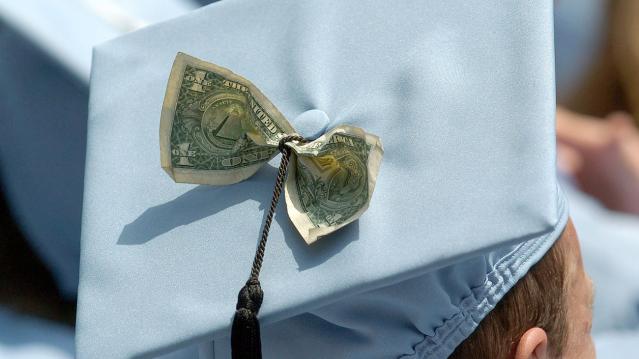The Easiest Way to Cut Your Home Insurance Bills

Here's a simple way to potentially cut $150 from your annual insurance expenses: Raising your homeowners’ insurance deductible from $500 to $2,000 could lower your premiums by an average of 16 percent, according to a new report by InsuranceQuotes.com. Based on the average insurance premium of $978, that works out to more than $150 a year in savings.
Of course, that lower bill comes with some caveats. First, the amount you save could vary widely depending on where you live and other factors. In the new study, the savings from a higher deductible ranged from 41 percent for North Carolina homeowners to just 4 percent in Hawaii.
Second, a higher deductible means that you would be on the hook to pay more out of pocket before your insurance coverage kicks in if something happened to your home. Before making the switch, be sure you have enough money in your emergency savings to cover the total cost of the deductible.
“Consumers need to consider the bottom line before increasing deductibles,” Laura Adams, a senior analyst with InsuranceQuotes.com said in a statement. “While switching from a $500 deductible to a $5,000 deductible sounds appealing because it lowers home insurance premiums by an average of 28 percent, it could be a risky move for consumers who don’t maintain that much in savings.”
Related: The Best Time to Buy Car Insurance
Increasing a deductible from $500 to $1,000 resulted in an average savings of 6 percent nationally, ranging from 25 percent in North Caorlina to a low of 1 percent in Kentucky.
As your deductible gets higher, it may become less likely that you file a claim at all, since doing so will push your premium up. A separate analysis last fall by insuranceQuotes.com found that a single claim—even if it’s denied—can hike your homeowners’ insurance by an average of 9 percent a year, which can amount to hundreds of dollars.
Chart of the Day: Long Way to Go on Coronavirus Testing

The White House on Friday unveiled plans for a new effort to ramp up testing for Covid-19, which experts say is an essential part of limiting the spread of the virus. This chart from Vox gives a sense of just how far the U.S. has to go to catch up to other countries that are dealing with the pandemic, including South Korea, the leading virus screener with 3,692 tests per million people. The U.S., by comparison, has done about 23 tests per million people as of March 12.
After Spending $2 Billion, Air Force Bails Out on Planned Upgrades of B-2 Bombers

The Air Force has scrapped a planned upgrade of its B-2 stealth bomber fleet — even after spending $2 billion on the effort — because defense contractor Northrup Grumman didn’t have the necessary software expertise to complete the project on time and on budget, Bloomberg’s Anthony Capaccio reports, citing the Pentagon’s chief weapons buyer.
Ellen Lord, the undersecretary of defense for acquisition and sustainment, told reporters that the nearly $2 billion that had already been spent on the program wasn’t wasted because “we are still going to get upgraded electronic displays.”
Big Hurdle for Sanders’ Plan to Cancel Student Debt

Bernie Sanders wants to eliminate $1.6 trillion in student debt, to be paid for by a tax on financial transactions, but doing so won’t be easy, says Josh Mitchell of The Wall Street Journal.
The main problem for Sanders is that most Americans don’t support the plan, with 57% of respondents in a poll last fall saying they oppose the idea of canceling all student debt. And the politics are particularly thorny for Sanders as he prepares for a likely general election run, Mitchell says: “Among the strongest opponents are groups Democrats hope to peel away from President Trump: Rust Belt voters, independents, whites, men and voters in rural areas.”
Number of the Day: $7 Million

That’s how much Michael Bloomberg is spending per day in his pursuit of the Democratic presidential nomination, according to new monthly filings with the Federal Election Commission. “In January alone, Bloomberg dropped more than $220 million on his free-spending presidential campaign,” The Hill says. “That breaks down to about $7.1 million a day, $300,000 an hour or $5,000 per minute.”

